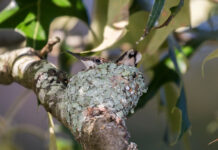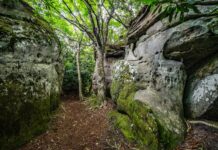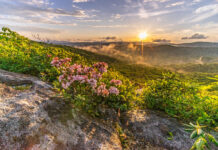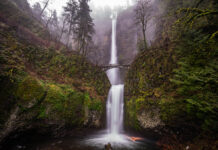
Some 375 miles after the Appalachian Trail departs Springer Mountain here in Georgia, it passes through an area known as the Roan Highlands.
Like something out of a fairytale, for a couple of weeks each year, this part of the Appalachian Trail becomes one of the most beautiful places in the country. The balds here are all around or just over 6,000 feet in elevation, meaning spring comes a little later than most places.
Thanks to this elevation, by early to mid-June, the afternoon highs are just now reaching into the 70s, with overnight lows generally still crisp in the 40s and occasionally 30s. Thus, the local wildflowers are usually reaching their peak by mid-month.
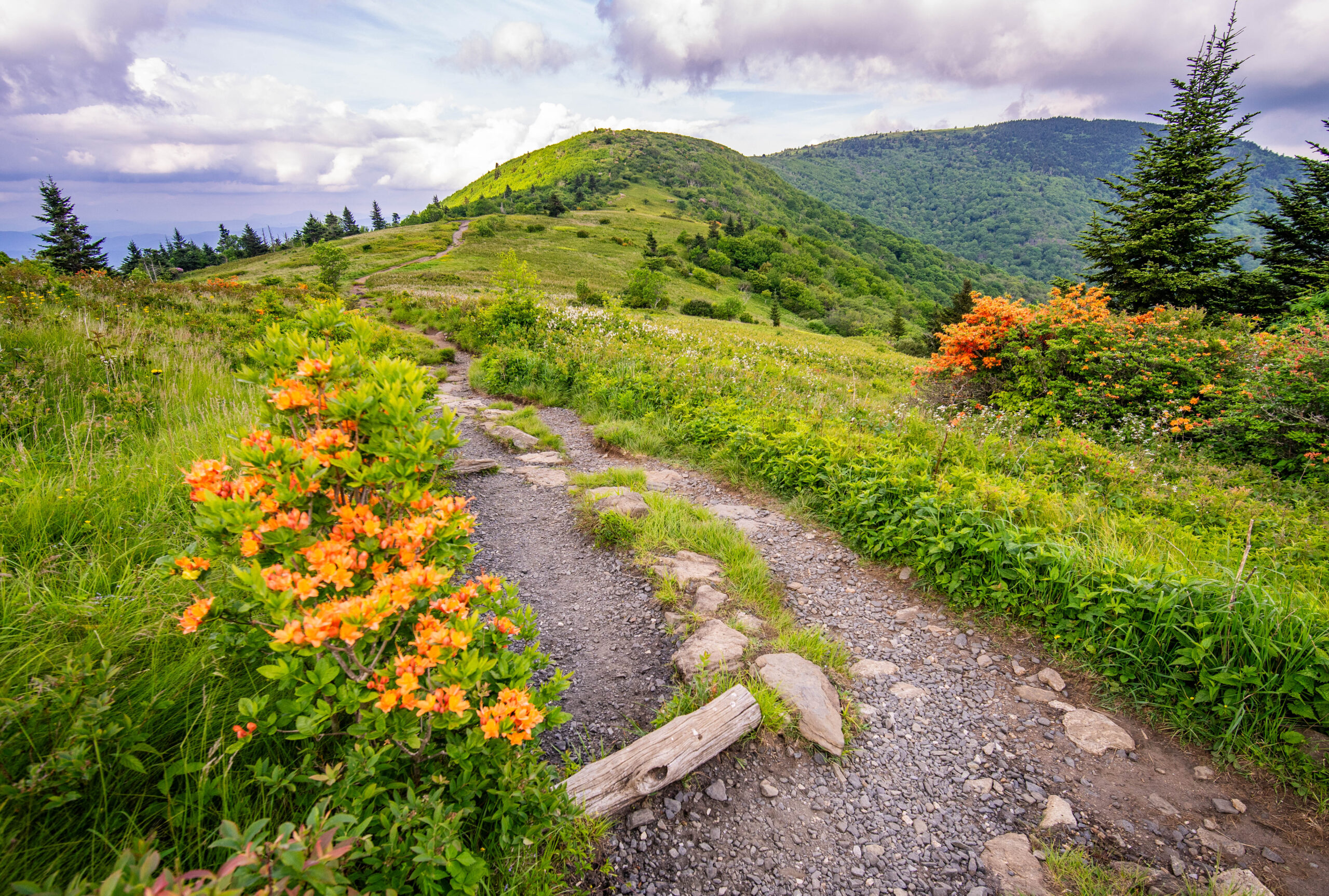
Most day hikers in the region depart from Carver’s Gap near Roan Mountain, TN. The trail here straddles the NC/TN line and is wide open with just a couple of small sections of tree cover. More often you will be hiking through waist-high grass and blueberry bushes.
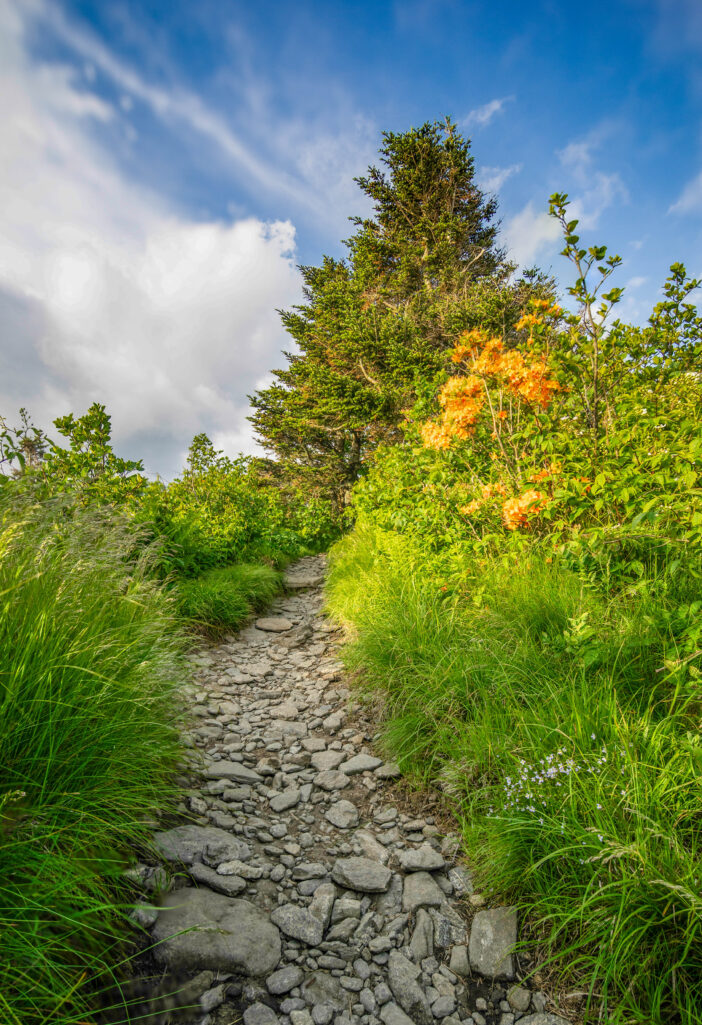
The trail is quite rocky, which can make it a bit difficult. You will also have no shortage of friends along the trail as the area is very popular during these peak times. Most people go to take in the large gardens of Catawba Rhododendrons that bloom.
This year was an off year, with the native bushes largely producing fewer blooms than in previous years. This isn’t particularly unusual, as they often have an “off” year to produce more new growth instead of wasting precious nutrients on flowers. This is especially true with the higher-elevation plants. There were still plenty to be found, however.

If you are determined enough, you can reach Grassy Ridge Bald off a side trail. Hiking up this trail will put you through tunnels of these rhododendrons, eventually coming out on a bald spot near the top. There are numerous rhododendron bushes here; even in an off-year, they are absolutely spectacular.
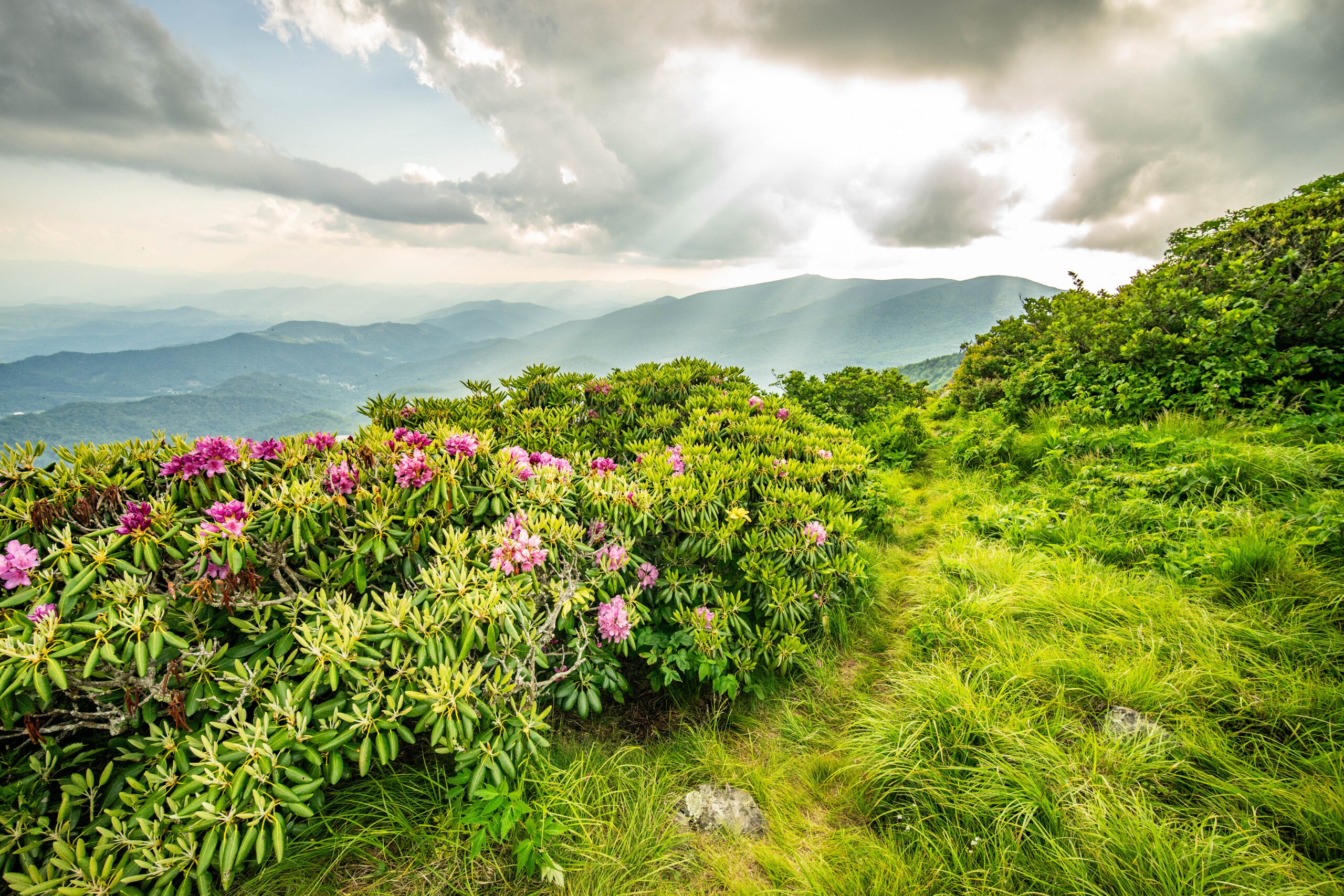
My favorite flowering bush on the balds isn’t the rhododendron but the Flame Azaleas. Azaleas are a sub-species of rhododendrons but are generally smaller and produce smaller flowers.
The Flame Azaleas were the star of the show this year, with the bushes being the most loaded I have ever seen.
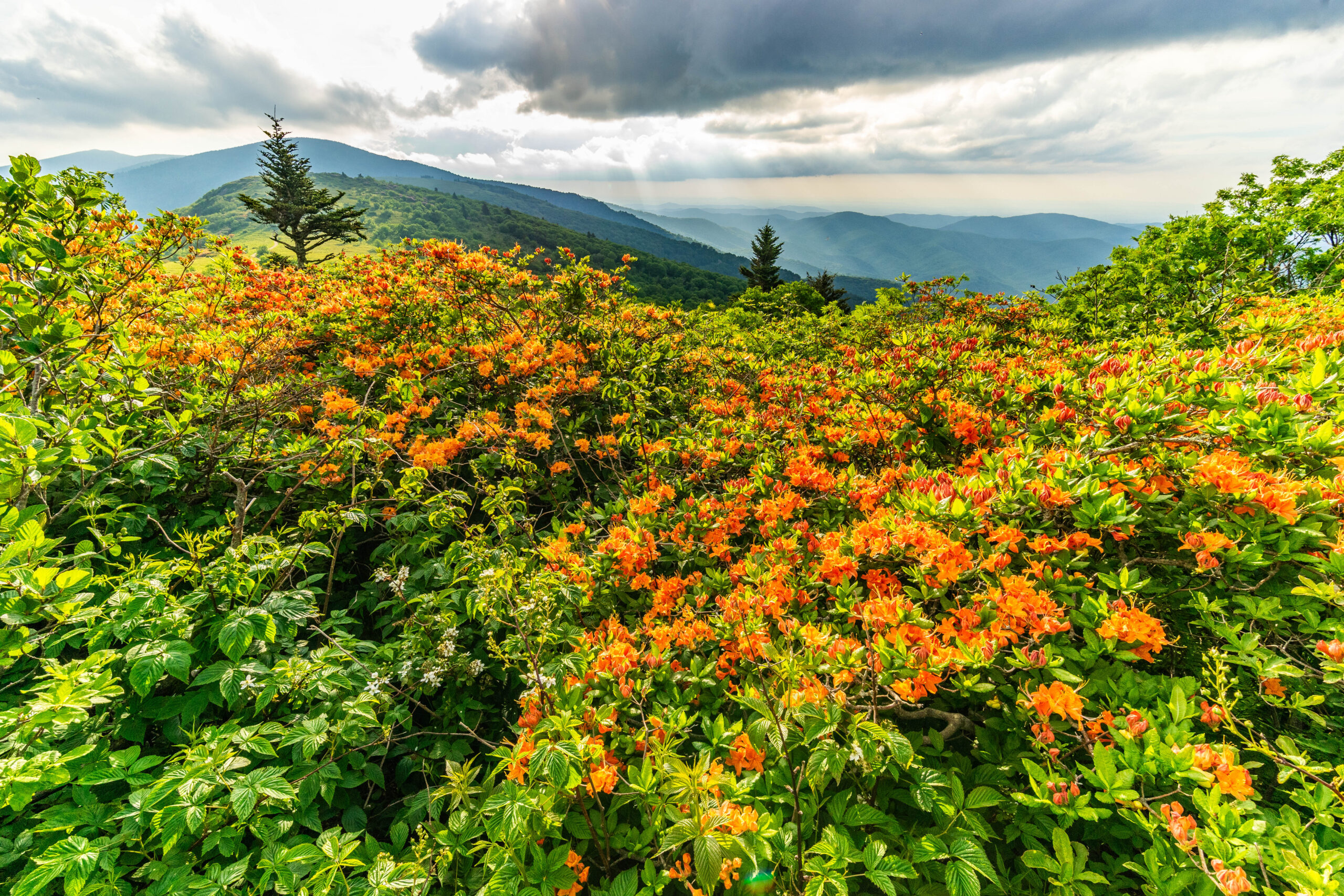
If you are patient, you will see them covered up in local pollinators, too. Honeybees, hummingbirds, and various butterflies and moths love the sweet nectar. Monarchs can even be found from time to time, although I did not see any on this year’s trip.
I managed to make it out for two sunsets this year. The most spectacular is the main image at the top of this post, but the one below was a sunset from the day before. Sunsets on Roan have been fickle to me over the years, with some stunners and a lot of clouds. Fortunately, even a cloudy day can result in some pretty spectacular sights.
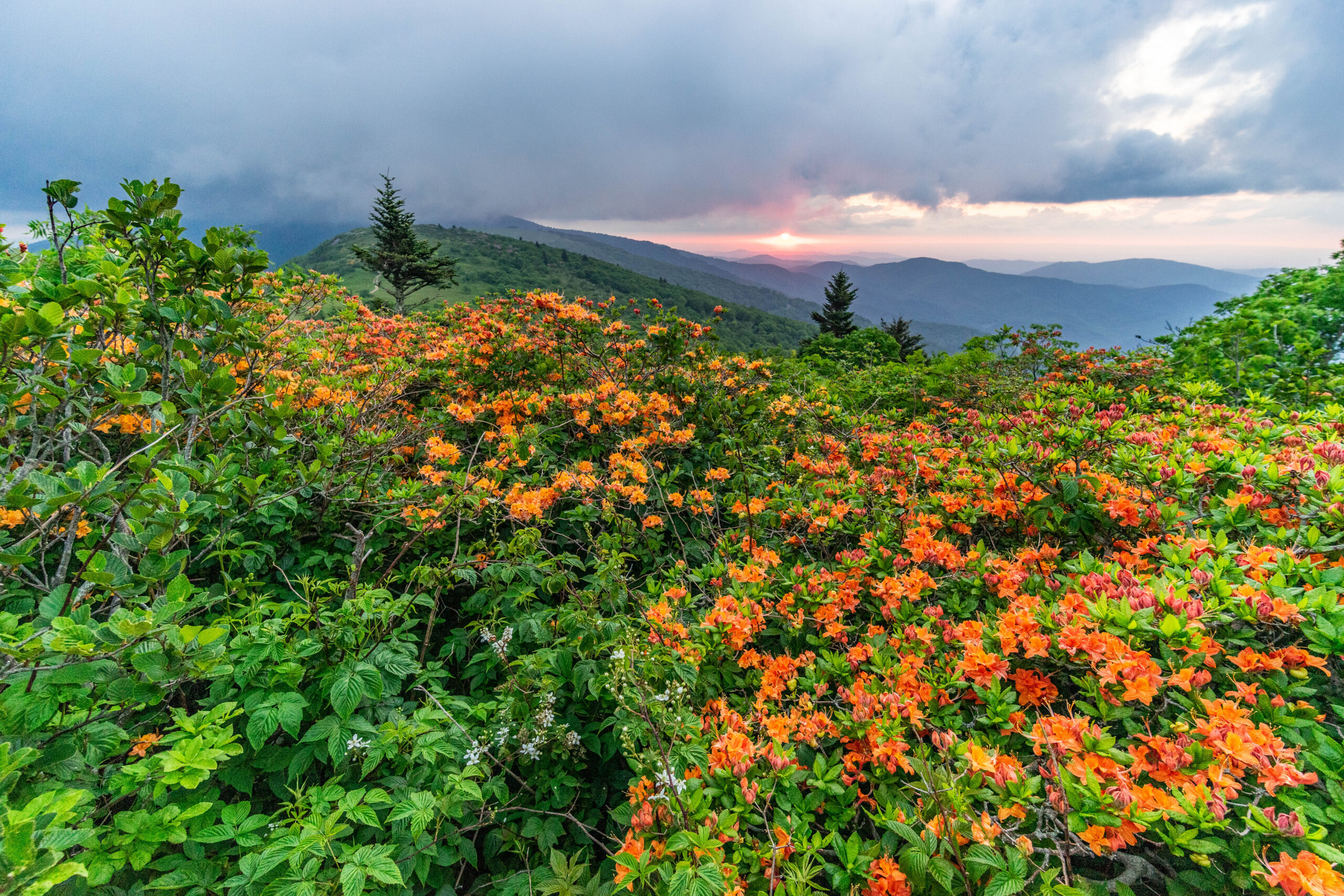
With the rhododendron and azalea season coming and going at this high elevation we will move deeper into the summer months with Turk’s Cap Lilies, Black-Eyed Susans, Galax, and a host of other wildflowers blooming.
It is certainly worth getting out of the house and occasionally your state for.



